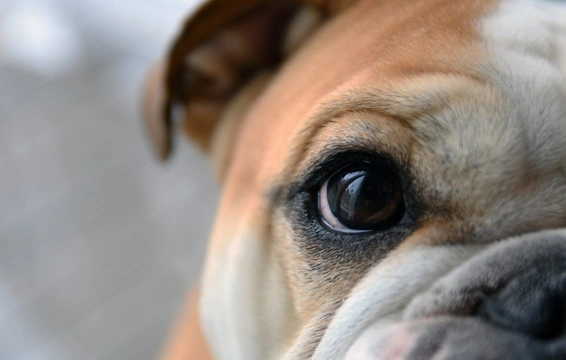
Anisocoria in dogs – a canine eye problem
Most dog owners know that dogs can develop cataracts, glaucoma and a number of other eye conditions that can also be found in humans, but the eyes are fascinating and complex organs that can suffer from a broad range of different issues, including those caused by health conditions and those caused by accidents or injuries.
One such condition that not all dog owners are aware of is called anisocoria, and this is the term we use to describe a situation that results in the pupil of one of the dog’s eyes being noticeably larger or smaller than the other.
In this article we will look at anisocoria in dogs in more detail, and examine how the condition can develop, the most common causes, anisocoria symptoms, and what can be done to treat or manage canine anisocoria. Read on to find out more about anisocoria in dogs.
What is anisocoria in dogs?
Anisocoria is simply a term used to refer to a situation when the pupils of a dog’s eyes are two different sizes. Whether that means that one pupil is normal size and the other abnormally large, or one pupil is normal and the other abnormally small, anisocoria in dogs indicates that something potentially serious is amiss with their eyes, which requires prompt veterinary attention.
The pupils of your dog’s eyes expand and contract in response to light, and the size of their pupils will vary depending on the lighting levels. In bright lights, the pupils shrink to avoid pain and glare, whilst in dim light, the pupils expand to maximise the amount of available light that reaches the retina, enabling the dog to see as well as possible.
However, normal pupils expand and contract as a pair, and will not have a noticeable difference in size.
What causes anisocoria in dogs?
Whichever pupil is abnormally sized (be that smaller or larger than the other) is the one exhibiting anisocoria, and there are quite a number of different health conditions and issues that can result in the development of anisocoria in dogs.
These include:
- A physical problem with the cornea of the eye, such as ulceration that can occur in dry eyes, or a physical injury that damages the cornea.
- Problems or illnesses that affect the neural pathways between the dog’s brain and their eyes.
- Inflammatory conditions of the dog’s inner eye, such as uveitis. Uveitis doesn’t always result in anisocoria, but when it does, the problem pupil will generally be smaller than normal rather than larger. Scar tissue in the eye that can develop over time in dogs with uveitis can also result in anisocoria.
- Certain ocular cancers can result in anisocoria, but this tends to happen quite late in the progression of such cancers.
- Glaucoma, a common disorder of the fluid pressure in the eye can also cause anisocoria, in which the affected pupil will tend to be overly large.
- Hereditary conformation issues with the eyes that affect the development of the iris can result in anisocoria.
- Retinal diseases of various types can cause anisocoria in dogs too.
- A head injury or impact is something else that can result in uneven pupils or anisocoria.
Anisocoria in dogs tends to develop quickly – your dog’s eyes may look fine earlier on in the day, then be noticeably different just a few hours later. However, this is not always the case, so if you notice any problems or changes with your dog’s eyes, even if they occur over a longer period of time and don’t seem to be affecting their vision or causing pain, always contact your vet right away.
The symptoms of anisocoria in dogs
The main symptom of anisocoria in dogs is of course that one pupil is abnormally large or small, which is always an indication of something being wrong and which should never be ignored. However, other symptoms may be present too in some cases, which can aid with diagnosis of anisocoria.
These other symptoms may include redness or inflammation in the affected eye, a discharge from the eye, clouding of the cornea, or a drooping eye lid.
Can anisocoria in dogs be treated?
You need to take your dog to the vet right away if you spot anisocoria, and your vet will need to reach a formal diagnosis of the condition before they can determine the right way to proceed. They will need to examine the eyes themselves, take into account the dog’s health history and any potential causes, and run some tests and potentially, take scrapings from the eye too.
If your vet is in doubt, they may wish to consult with a specialist veterinary ophthalmologist, or refer your dog to a canine eye specialist.
Treatment for anisocoria in dogs relies upon identifying and treating the underlying condition causing it, as anisocoria is not so much a condition in its own right but rather, the symptom of another underlying issue. This means that the prognosis for each affected dog will vary too, depending on what caused the issue in the first place, and how effectively it can be treated or managed.



